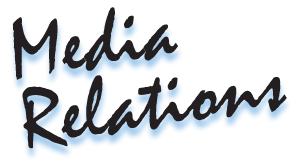
3 Cs of a good interview:
- Confidence. Keep your cool.
- Determine story angle.
- Research reporter's beat and reputation.
- Practice.
- Expect the unexpected. Think of the worst possible question and prepare for it.
- Conciseness. Don't say more than you want or need to say. Stay on message.
- Develop 10-15 second sound bites.
- Create simple sentences that can stand on their own.
- Practice.
- Know when to stop. Don't be trapped by reporter's moment of silence.
- Yes and no answers are okay if applicable.
- Consistency. The more a reporter hears your message, the greater chance
it will be used in the story.
- Repeat your messages.
- Answer the question the way you want.
- Avoid the hypothetical.
Other items:
- Don't forget importance of non-verbal communication (body gestures, clothing, hairstyle, make-up).
- If you can't fit your message on a 3x5 index card, it's not worth saying.
- Small talk prior to and after an interview are "on the record."
- Be aware of wireless microphones.
- Women: Sit with your legs together, only cross them if you're wearing pants. Don't move your head a lot. Wear the same color top and bottom.
- Sit up, sit closer to edge of chair and don't lean back.
- Avoid barriers (like a desk) between interviewer and interviewee.
- Don't cross your arms.
- Invite reporter to your turf, you'll be more comfortable.
- Check the area where the interview will take place to make sure sensitive or confidential information is not visible.
Recommended resource books:
- "On Deadline: Managing Media Relations," by Carole M. Howard and Wilma K. Mathews.
- "Mike Fright: How to Succeed in Media Interviews When Mike Wallace Comes Calling," by David Snell.
- "Soundbites: A Business Guide to Working With the Media," by Kathy Kerchner.